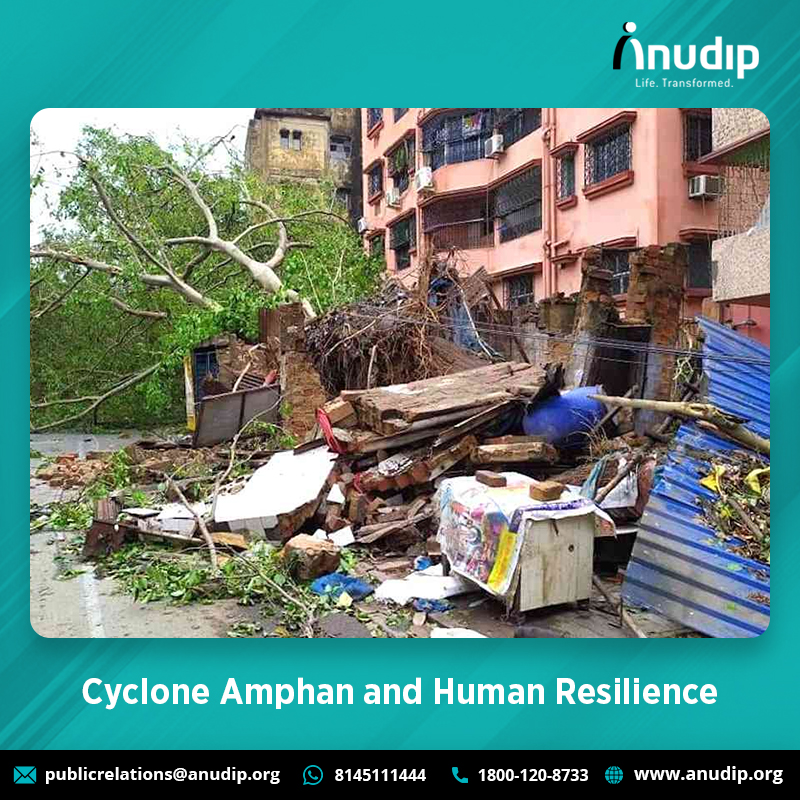
When the destructive power of mother-nature bears down, humans have little else to do rather than watchhelplessly and pick up the pieces later. This was in full display in the recent cyclone Amphan that ravaged the state of West Bengal on 20th May 2020. The squally winds reaching up to a speed of 120 kmph in the city of Kolkata and its vicinity while battering the coastal areas with wind speeds of 165 – 175 kmph, had led in its wake a trail of destruction. This was arguably the most powerful cyclone to have hit the coast of West Bengal in a long time. Although the contours, direction, and speed of the cyclone were mapped well in advance, and which did help matters to some extent, the real fury was felt from the afternoon of May 20th.
The cyclone came as a double whammy with COVID-19 induced lockdown already playing havoc with people’s lives and livelihood. The lockdown had severely impacted the people living on the margins with their livelihoods snatched. And the cyclone further battered them and the economy of the state. Let us know the impact of Cyclone Amphan and how human resilience in the form of massive social help efforts facilitated the rebuilding of the infrastructure impacted with devastation.
# Cyclone and its aftermath: The cyclone’s fury was mostly unleashed in the coastal areas of the state where, notwithstanding the readiness of the administration in shifting people to ‘safer places’ in advance, it was found unprepared to deal with the aftermath. The trail of devastation that unfolded the following day saw more than 85 people losing their lives and massive destruction to livelihood and infrastructure. Most thatched houses,crops, bunds, livestock, trees, electric and telephone communication were uprooted and damaged. In the coastal areas, several bunds were breached and seawater inundated the fields and destroying crops.In Kolkata and the nearby areas, more than 5000 trees were uprooted along with electric posts. This wrecked the telecommunications network and a large part of the affected area was devoid of any connectivity for many days.
# Reconstruction work in full swing: The menacing force of nature notwithstanding, it would be worth mentioning the human endurance and resilience in rising to the challenge. The same was in full display when local people and administration joined hands to bring some semblance of normalcy. With electricity and telecommunication network disrupted in major parts of Kolkata and the affected districts of West Bengal, the task of reconstruction was made difficult. In fact, many non-profit organizations and corporates lent help in providing succour to the affected through corporate social responsibility program.
# Anudip’s role in mitigating the impact for some: Anudip, along with its team, had fanned out to the affected areas as relief agents. With deep roots in the delta region of Sunderbans, arguably, one among the severely impacted regions, team Anudip got in touch with local panchayats and BDO offices. Anudip had been able to reach out to scores of people in the region and helped more than 2000 people by offering relief materials. These include tarpaulins, water purifiers, medical supplies, mosquito coils and nets, and dry food to the victims of this natural calamity. Its vast network of alumni and employees associated with various skill development training centres tried its best to lend a helping hand to the hapless people in rebuilding their lives.